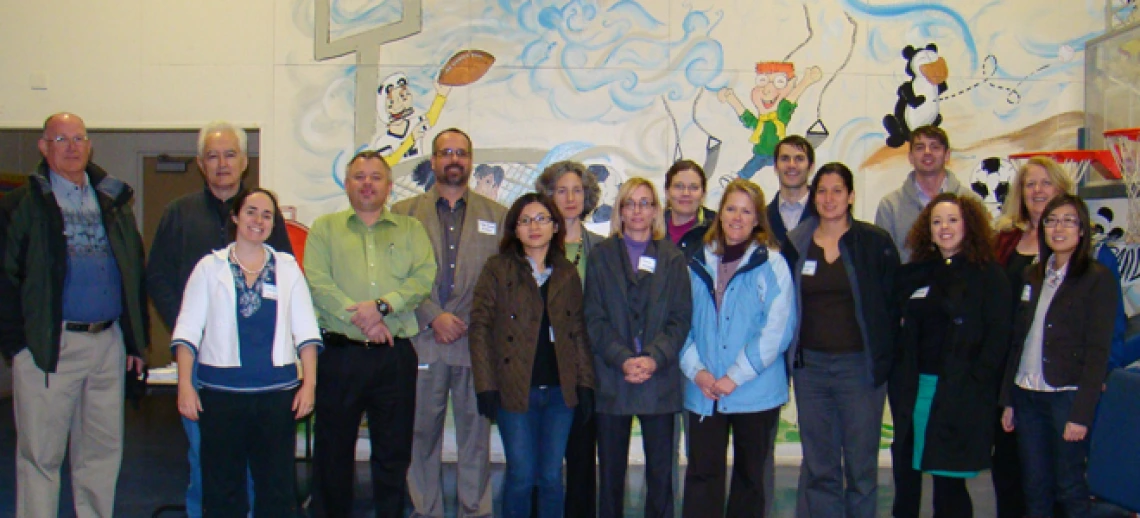Partnering with US EPA, ATSDR, and state agencies in Dewey-Humboldt, AZ

On December 7, 2013, the University of Arizona Superfund Research Program (UA SRP) participated in a multi-stakeholder community meeting in Dewey-Humboldt, AZ. Residents of the town live in close proximity to the Iron King Mine and Humboldt Smelter Superfund site and may be exposed to metal contamination in soil and water via Superfund site and natural sources. The purpose of the public meeting was to provide residents with information for understanding and reducing their exposures to arsenic and other metals associated with the Superfund site and to update the community on site-related research as well as the clean-up process by the US Environmental Protection Agency (US EPA).
More than fifty local residents attended the event, held at the local elementary school, to listen to scheduled presentations and visit informational tables for one-on-one time with experts from the UA SRP, US EPA, Agency for Toxic Substances and Disease Registry (ATSDR), Arizona Department of Environmental Quality (ADEQ), and Arizona Department of Health Services (ADHS). The Community Coalition of Dewey-Humboldt, recipients of a Technical Advisory Grant from the US EPA, was there with the Technical Advisor to help community members interpret technical information about the site. During presentations and at the tables, the UA SRP and other agency representatives fielded questions from community members on topics ranging from the Superfund clean-up schedule, to water filtration options, to safe gardening practices.
UA SRP attendees were: our Director, Dr. Raina Maier; Metals Exposure Study in Homes investigator Dr. Miranda Loh and coordinator Nathan Lothrop; and Research Translation Core co-leader Dr. Janick Artiola and coordinator Dr. Sarah Wilkinson. In addition, former trainee and Gardenroots scientist Dr. Mónica Ramírez-Andreotta flew in from Boston to participate in the event!
The planning and implementation of this multi-stakeholder event required extensive coordination with our state and federal partners throughout 2013. We worked with personnel from US EPA Region 9, ATSDR Region 9, ADEQ, ADHS, and University of Arizona Cooperative Extension. Together we developed coordinated messaging to inform community members about how they may be exposed to metals (from both Superfund and natural sources) and how they can limit their exposure. (Click here to download the “Arsenic in drinking water: what you need to know” handout we developed for the community.) We used data from the UA SRP and agency studies in the community to provide real-life examples of exposure and exposure reduction. At the event, representatives from the UA SRP and various agencies delivered a coordinated PowerPoint presentation on these topics. Information on exposure and exposure reduction was also provided via printed handouts. “Who’s who” information was provided so that community members with questions on specific issues could initiate one-on-one consultations at UA SRP and/or specific agency tables throughout the meeting or contact us in the future.
The community meeting was publicized before and after the event in the Dewey-Humboldt Newsletter and town website, as well as the local paper, the Prescott Valley Tribune. In order to maintain the momentum of our successful partnership, conference calls between the agencies involved have already been scheduled for 2014.
Check out this CDC blog post by our ATSDR colleagues, inspired by their experience at the event! They also developed 2 national communications for distribution by the CDC: "Did You Know?" and "Have You Heard?"

